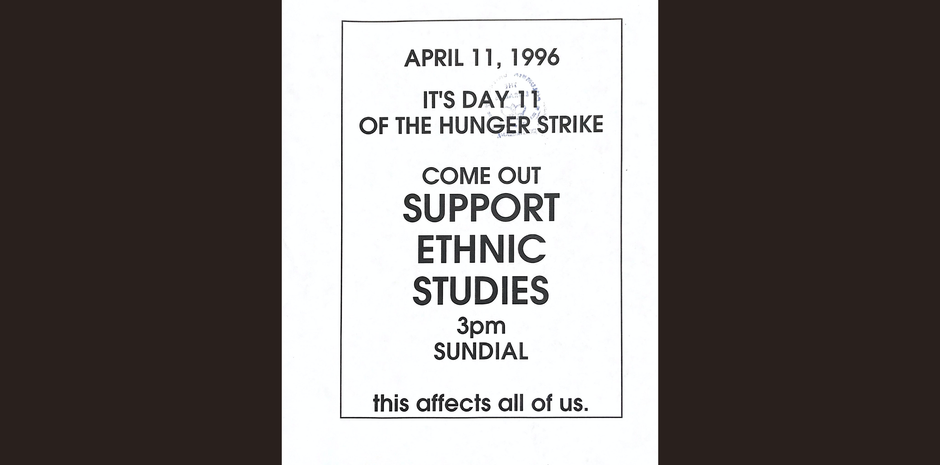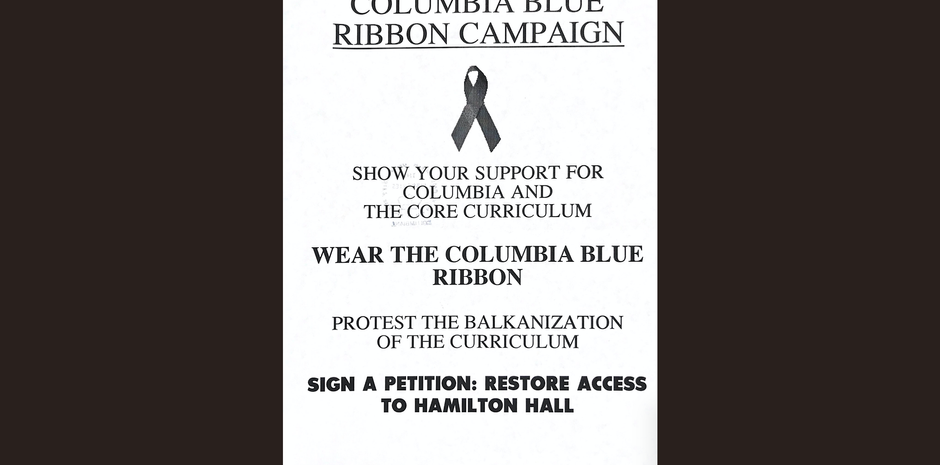
The Ethnic Studies Protest
April 1st, 1996 --- April 15th, 1996
April 1st, 1996 marked the beginning of the 15-day hunger strike for an ethnic studies department at Columbia University. Garnering the support of more than 200 students and community members, the protest eventually proceeded on to Low Library and Hamilton Hall to demand the administration for a commitment the students had waited so long for.
The strike, despite threats from both the Columbia administration and the NYPD, persisted through April 15th, ultimately eliciting a proposal from President Rupp to hire tenure faculty for Asian American and Latinx studies, as well as a blue ribbon committee that would later found the Center for the Study of Ethnicity and Race (CSER) at Columbia University.
Leading up to the April 1996 Protests
⇩ Click for Full Article View






Feb 07
Students occupy Dean Austin Quigley’s office asking for written commitment for an ethnic studies curriculum. After 2 hours of deliberation administration decides to discuss further with advocates
Feb 14
Meeting was held between six student representatives and five administrators, including President Rupp and Provost Cole. Students came out “reassured” that administration would prioritize ethnic studies curriculum.
Feb 21
Administration offers plan to find tenured professor for Asian American studies by Fall ‘97. Students ask to have direct participation in search process to ensure that an appealing offer is extended to qualified candidates
Feb 23
Ethnic Studies Committee members assumes voice in many on-campus dialogues & continues to be relevant in discussions around enhancing student experience, faculty & student talks, healthcare protests at Barnard.
Mar 20
Committee for Ethnic Studies holds urgent meeting in response to administration's plan to host different areas of ethnic studies under an umbrella American Studies program instead of a separate department.
Mar 31
Committee for Ethnic Studies officially plan a hunger strike to begin April 1st, 1996.

Why A Strike?
By 1996, student advocates had amassed "a generation's worth of proposals" (Agueros, CC '96) for various ethnic studies majors, including a famous 150-page proposal for a Latino Studies track at Columbia. Frustration abounded around the fact that Columbia was simply going to wait out until student activists lose momentum.
"At that point, the strike was out of desperation - a final resort. We needed to do something a little bit more dramatic [after trying] the standard sit-ins, demonstrations and teachings." (Marcel Agueros, CC '96) Hence, a hunger strike - accompanies by occupations, candlelight vigils, traffic stops, speak outs and rallies - was launched on April of 1996.
A Peek Into the 1996 Protests
-------------------- § --------------------
A collection of flyers, articles, footage, and administrative documents here will tell the story of the ethnic studies student strike that began on April 1st, 1996 and went on for 15 days.
We Demand: Ethnic Studies
The Ethnic Studies Manifesto and what the demands of 1996 student protests looked like
"We call on our institution to take the leadership in this area as it has in others, and to create a solid and institutional home for Ethnic Studies ---- a Department of Ethnic Studies."

Link to SPEaK@Columbia for digital copy



Link to SPEaK@Columbia for digital copy

“What a university is about is a commitment to seeking truth.”
President George Rupp, after consenting for the arrest of 22 student protestors
Exhibit I: Flyers
⇩ Click Image for Full View & Description
Exhibit II: Spectator Cartoons

Outcome
The final proposal agreed upon by administrators and students on April 15th hardly came close to the initial demands articulated in the Ethnic Studies Manifesto. Given that the negotiation involved a threat of suspension and expulsion of the already exhausted student protestors, it was only natural that the final deliberation would be biased. The April 1996 protests did not result in an ethnic studies department, nor did it bring the 7+ tenure line faculty hires. Looking just at what the administration conceded vs. what the students had to sacrifice, it is hard not to get a disheartening view on the efficacy of the protests.
.jpg)


.jpg)

Nevertheless, the April 1996 protests accomplished small but significant changes. It brought a dormant administration to the negotiating table. President Rupp, who just 10 days ago stated he “see[s] no prospect for the meeting” for ethnic studies, sat down in a negotiation meeting with students and faculty for a proposal for an ethnic studies program. A track on Latino Studies was approved in the backdrop of an increased awareness of the ethnic studies hunger strike. A foundation for a center was to be initiated along with faculty hires, an acknowledgment of “ethnic studies” - including Asian American, Latino, African American studies - as its own discipline.

Elbert Garcia, CC '97
"Look around you, at all the people. You can say a couple of days from now, a couple of years from now that you were part of the process of getting change done here at Columbia."





















